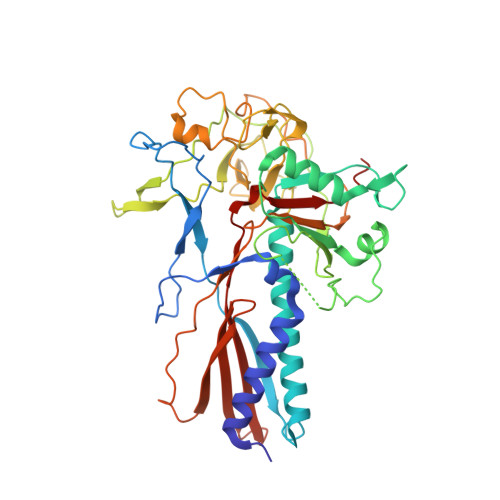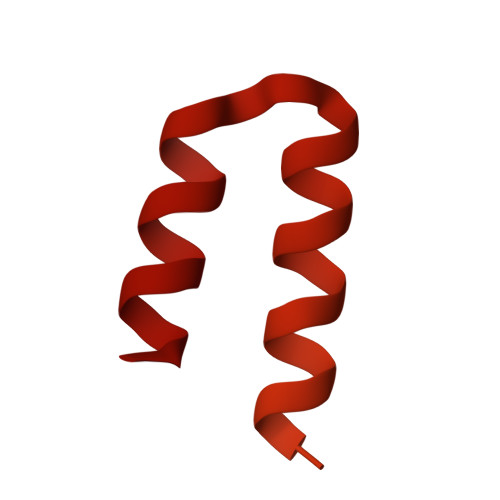Assembly and Capsid Expansion Mechanism of Bacteriophage P22 Revealed by High-Resolution Cryo-EM Structures.
Xiao, H., Zhou, J., Yang, F., Liu, Z., Song, J., Chen, W., Liu, H., Cheng, L.(2023) Viruses 15
- PubMed: 36851569
- DOI: https://doi.org/10.3390/v15020355
- Primary Citation of Related Structures:
8I1T, 8I1V - PubMed Abstract:
The formation of many double-stranded DNA viruses, such as herpesviruses and bacteriophages, begins with the scaffolding-protein-mediated assembly of the procapsid. Subsequently, the procapsid undergoes extensive structural rearrangement and expansion to become the mature capsid. Bacteriophage P22 is an established model system used to study virus maturation. Here, we report the cryo-electron microscopy structures of procapsid, empty procapsid, empty mature capsid, and mature capsid of phage P22 at resolutions of 2.6 Å, 3.9 Å, 2.8 Å, and 3.0 Å, respectively. The structure of the procapsid allowed us to build an accurate model of the coat protein gp5 and the C-terminal region of the scaffolding protein gp8. In addition, interactions among the gp5 subunits responsible for procapsid assembly and stabilization were identified. Two C-terminal α-helices of gp8 were observed to interact with the coat protein in the procapsid. The amino acid interactions between gp5 and gp8 in the procapsid were consistent with the results of previous biochemical studies involving mutant proteins. Our structures reveal hydrogen bonds and salt bridges between the gp5 subunits in the procapsid and the conformational changes of the gp5 domains involved in the closure of the local sixfold opening and a thinner capsid shell during capsid maturation.
Organizational Affiliation:
Institute of Interdisciplinary Studies, Key Laboratory for Matter Microstructure and Function of Hunan Province, Key Laboratory of Low-dimensional Quantum Structures and Quantum Control, Hunan Normal University, Changsha 410082, China.















